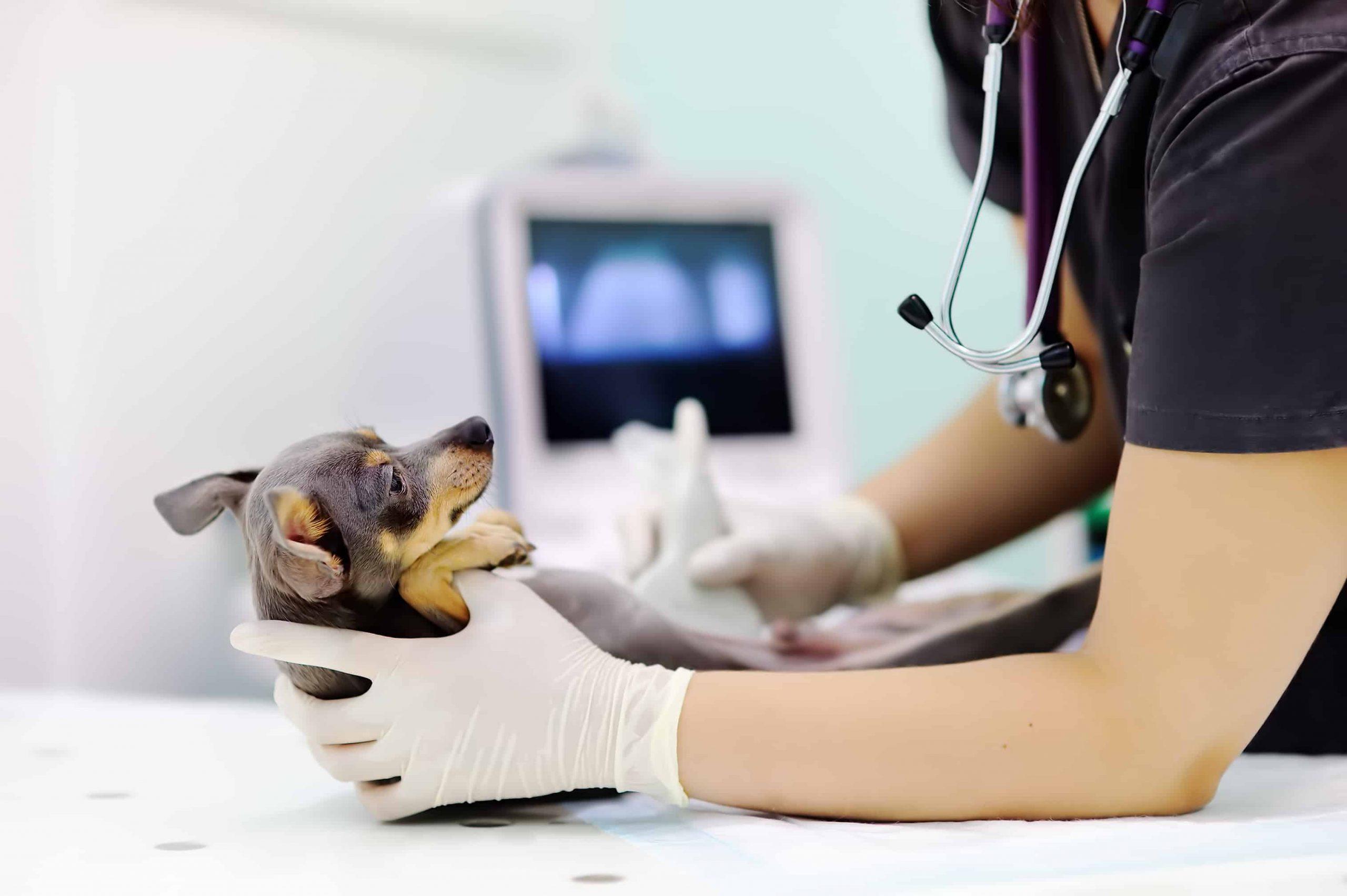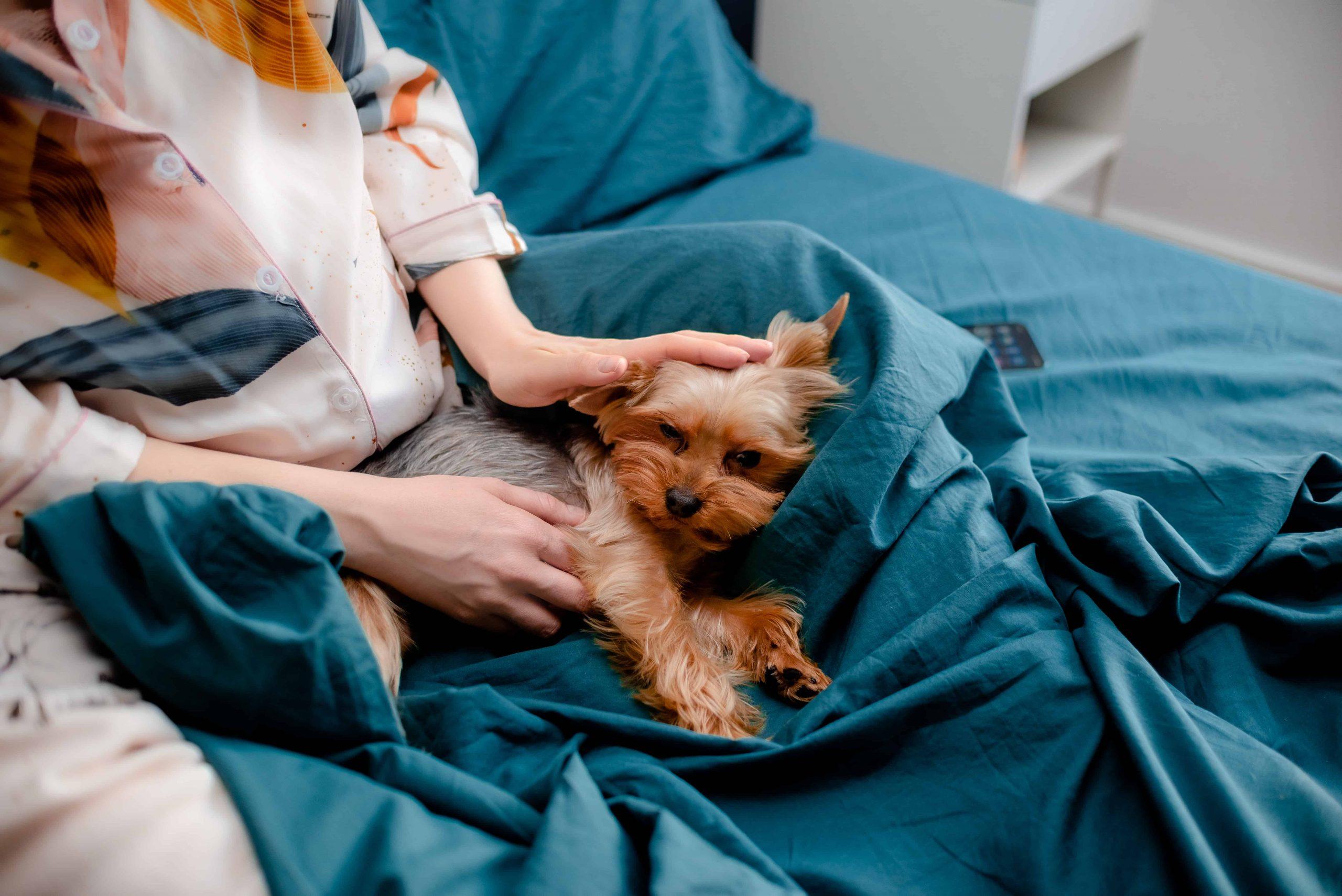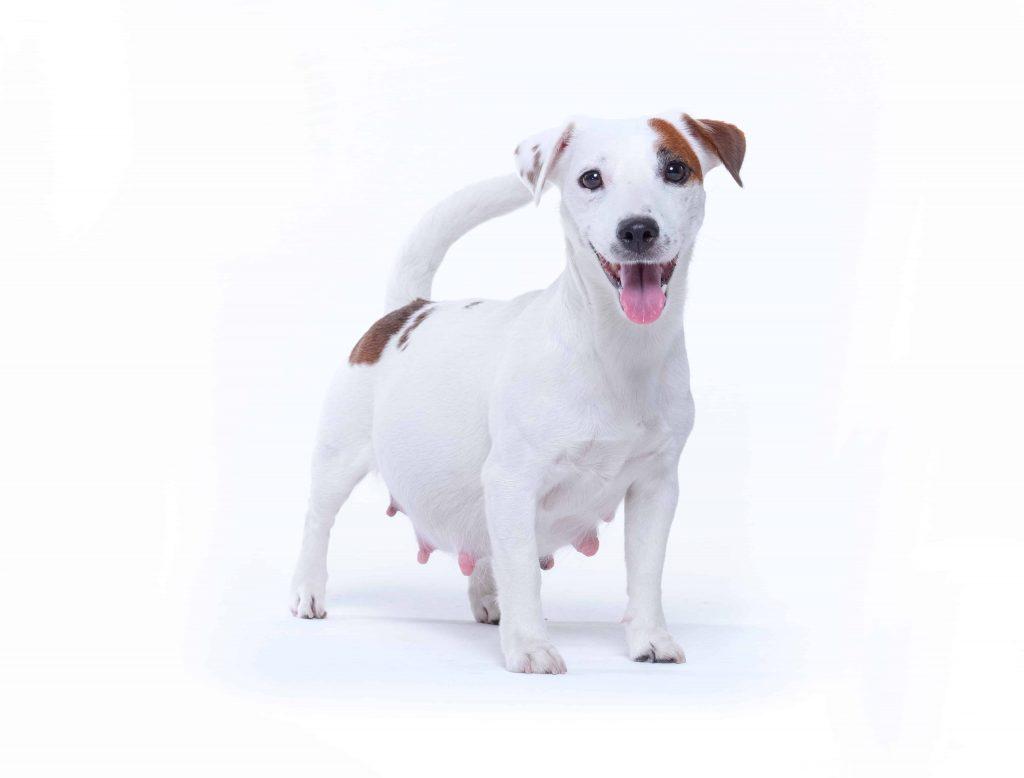If your female dog is looking rounder than usual, it’s possible that her weakness for pig ears isn’t to blame this time.
Weight gain is one of the signs that your beloved canine could be pregnant with a litter of puppies.
It’s a good idea to understand all the signs of canine pregnancy, so that you know to take your dog to the vet for a check-up. Your vet will either confirm the pregnancy or uncover another cause behind the symptoms, if there is one.
Before we talk about the signs, it’s important to understand that canine pregnancies generally last for about two months (though this changes, depending on your dog’s breed and how many pups she’s carrying).
The gestation period is a lot shorter than with humans, so you want to be prepared so you can support a healthy pregnancy and give the pups the best start to life.
How to know if my dog is pregnant?
At a glance, here are the general signs:
- Bigger appetite than usual
- Heavier!
- Stomach is swollen
- Nipples look bigger
- Increased urination
- Easily fatigued
- Nesting behaviours, such as tearing blankets, over-the-top grooming and making “dens” in furniture.
- Irritability
- Friendlier than usual
- Vomiting
- Low appetite in the initial stages
Now let’s break this down into the different stages of dog pregnancy.
What are the first signs of pregnancy in a dog?
Dogs can fall pregnant within two to three days after mating, but usually don’t show symptoms during the initial weeks.
However, there may be a change in appetite that seems to come from nowhere. Your dog could be scoffing down her food like there’s no tomorrow, or completely turned off her dishes due to nausea. Her nipples and vulva may also look slightly swollen and you might notice some clear vaginal discharge after about one month.
It’s also not uncommon for dogs to be more affectionate during these initial weeks, even though they have less energy for physical activity.
There may be some weight gain and morning sickness.
Second month:
The signs of pregnancy are starting to become more obvious and weight gain is difficult to ignore! Your dog’s belly will feel firmer and look visibly larger from around day 45, which is when her appetite starts to wane too. You will probably notice she is urinating a lot more during this stage.
Third month:
It seems counter-intuitive, but your dog’s waist will actually start to look trimmer as the puppies prepare to enter the world by shifting into the birth canal. It’s not uncommon for milk to leak from the nipples at this stage, as her body gets into preparation mode for what’s to come.
The appetite loss would have continued from the second month and she might be quite restless by now – pacing around the room, shivering, panting and digging around. Her behavioural changes may have become more obvious. For example, she might not want to leave your side or on the flip side, may do everything she can to isolate herself from people and other animals.

Why should you see a vet if you suspect your dog is pregnant?
Even if you feel confident that your dog is pregnant, it’s important to take her to the vet for a check-up anyway. Drastic changes in behaviour and appearance can indicate serious illnesses, so you want to rule this out.
Your vet can also run some tests to confirm the pregnancy. It’s a good idea to get this confirmation, so that you know to take any action that’s required to create a comfortable and safe environment for your dog to give birth.
What about false pregnancy in dogs?
There’s a chance that your dog is experiencing a phantom pregnancy, even if they show some signs of expecting. False pregnancies are actually fairly common – around half of all unspayed canines will experience one in their lifetime. You won’t be able to tell whether your dog’s pregnancy is real or fake, but your vet can diagnose a false pregnancy with a physical examination (sometimes additional testing is required).
Diagnostic testing at the vet
The only way to know for certain if Fluffy is pregnant is to take her to your veterinarian, who can run diagnostic tests.
There are a number of options:
- Palpitation at the two month mark: this only works if you know the date your dog mated. Your vet will use their hands to palpate the abdominal region to feel around for the puppies, which will either be the size of grapes or small golf balls.
- Ultrasound between 25 and 35 days: This should pick up the puppies’ heart-beats, which are faster than your dog’s. Using this method, vets get an idea of how many pups are in the womb.
- Hormone test between 25 and 30 days: A blood test can detect whether or not your canine is producing a hormone that only arises during pregnancy (it’s called relaxin).
- X-ray after 55 days: An X-ray at this stage will reveal the shape of the pups, including their skeleton. While the ultrasound gives you a rough idea of how many pups to expect, an x-ray is far more accurate.

Caring for a pregnant dog and preparing for the litter to arrive
Now more than ever, it’s crucial to give your dog the best care possible. She’s growing a litter of puppies inside her, so needs extra nourishment and support. It’s time to be vigilant about what she eats and how much exercise she gets. You must also consider the most appropriate time for worming your dog, in order to give her pups the best start to life. Read about this (and more) in our article about what to do when your dog is pregnant for the first time.
Potiki dog insurance for veterinary check-ups
You could be looking at costs of at least $200 for your vet to run a standard test kit that shows whether your dog is producing the pregnancy hormone Relaxin. Of course, this figure doesn’t include consultation fees or further diagnostics.
If you have reliable pet insurance, you don’t have to worry about budgeting to pay for vet fees. Your policy would cover most of the costs, as long as it’s not a pre-existing condition.
Potiki’s affordable pet insurance gives you that peace of mind, but we go one step further…
We also send you free Potiki Perks to help you take care of your best pal’s general wellbeing.
All customers get access to Potiki Perks#. Potiki Perks# comes with the free Potiki Perks app offering exclusive offers, 2-for-1 deals, and up to 20% off in categories like dining, activities, shopping, travel, and more. You will also have access to myPetPass™** which unlocks extra support and savings on everyday pet essentials such as online vet care, discounted pet prescription medication and savings on premium pet food.
This is on top of reliable Potiki pet cover (via petinsurance.com.au) that pays for 80 per cent of your eligible vet bills for unexpected illness and injury.
- Get a quick Potiki quote to find out what your premium will cost for one year.
- Submit payment if you’re satisfied with that amount (email us on [email protected] with any questions).
- Log into your personal portal to select items for your Potiki Perks package, which will be swiftly delivered to you.
- Lodge a claim if you need help paying vet bills for unexpected sickness or injury.


